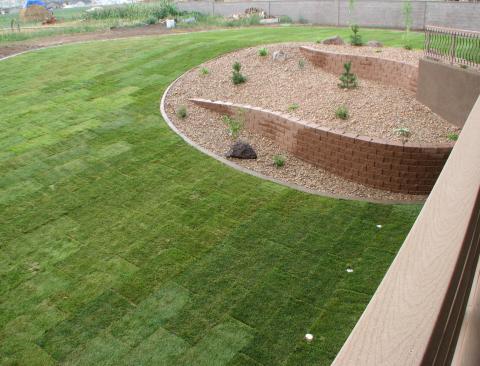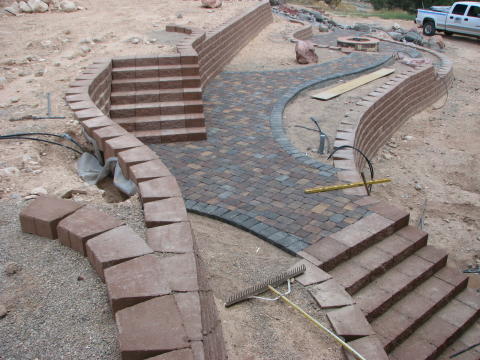|
Using landscaping-block to build a landscape retention wall.
Building walls using landscaping-block is a creative way to retain or terrace a slope. Show here is the product called Diamond Wall. Unlike the landscaping blocks you may see along freeways or on commercial projects these blocks have no pins. The design is based on the ancient roman design using weight and friction to retain a slope. The blocks are 16" wide x 6" tall x 12" deep, weigh 78 pounds each and step back 1 inch for each block, Since the blocks move back 2 inches for every one foot of rise, the wall leans on the slope. One or two blocks are buried below the surface, creating a stopping point so the wall doesn't slide. 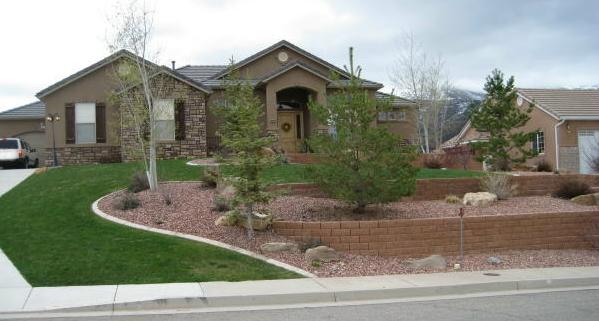
The joints have no mortar, which makes installation easy and also hides any cracks that may occur. additionally, if a settle spot occurs, simply unstack the block, level the base block and re-stack the wall to fix the problem.
I like this product for making a curving wall and blending grades together, as well as creating terraces. Once the lower grade matches the upper, we simply turn the wall into the hill and end it, creating a nice smooth transition. Placing a
landscape border
in front of the diamond wall is a good way to make lawn mowing and edging a joy
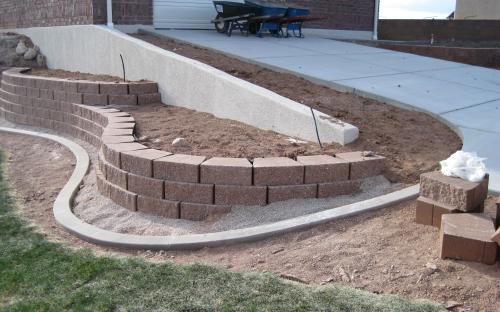
No concrete footing is needed with the diamond wall system. The base course is laid on a bed of pea gravel, and leveled one at a time, then the other levels are laid on . I won't lie to you, It's back breaking work to create one of these walls, and having equipment is absolutely necessary for back filling the walls and carrying the pallets of block around. Professional Landscapers make the work look easy, and it is, if you've done a hundred or so walls, but stacking those heavy blocks and filling in the dirt behind is only half of the work. The most important part is the base course. It must be level from block to block and front to back, or the wall looks wrong.
Diamond wall block also makes landscaping-block called step block. This one is not angled off on the ends and can be used to create stairs. We like to incorporate these stairs into the walls, to provide access to other areas of the yard.
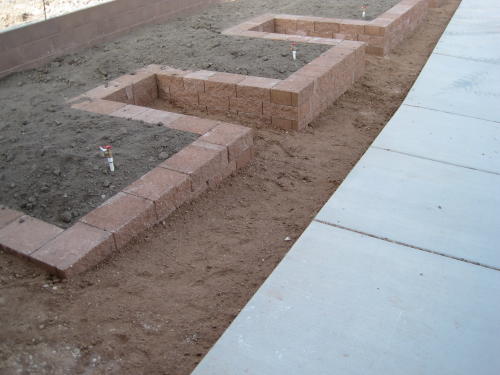
These step blocks also work well to create a nice garden grow box area. This one is complicated, but the idea is to have a row of berries all along the fence. That's why the skinny planter all along the fence. It was more economical not to separate the small planters from the long skinny one. You know money is always an issue in any design. We all want more bang for our buck. This garden turned out great. Uniform depth of beautiful black topsoil imported from a top secret location and mixed with 10 year old horse manure, is a great start for a new garden. Notice that we also included several water sources for this garden. The spigots are all controlled by one of the irrigation valves. No worries during summer vacation
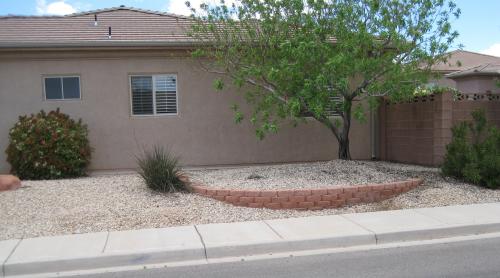
Maybe, you've seen the miniature version of these landscaping-block called Windsor Stone. The size is about 2/3 that of the Diamond Wall Blocks 12" wide x 4" thick x 6" deep. I use these in small scale situations, where creating terraces is the main goal. They don't make much sense when the wall is over 3' tall, too many little pieces.
|
